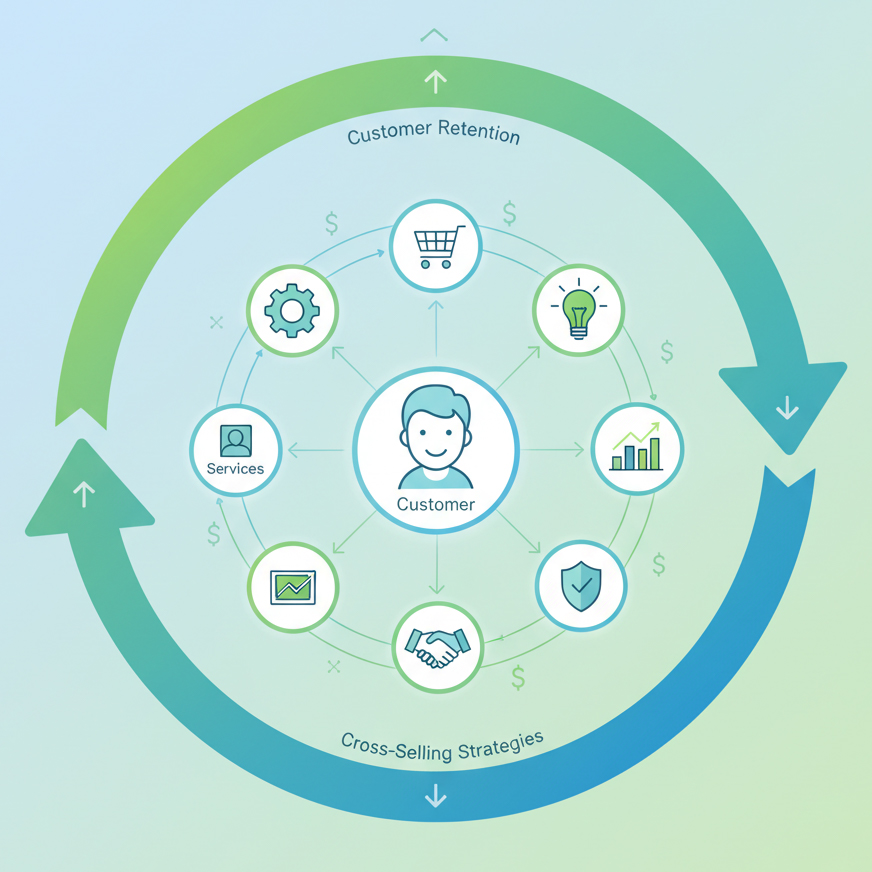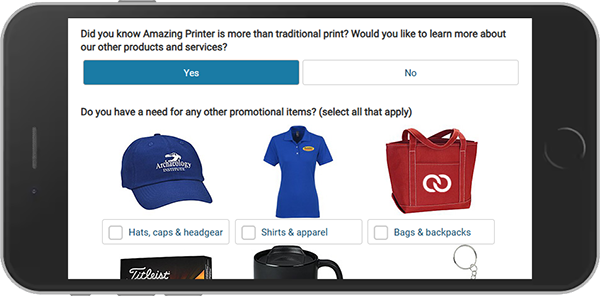Beyond the Initial Sale: How Smart Cross-Selling Drives Growth and Retention
Leveraging the subtlety of surveys to drive sales growth

Photo by Slidebean on Unsplash
In today's competitive landscape, businesses are constantly seeking new avenues for growth. While acquiring new customers is always a priority, a powerful and often overlooked strategy lies right within your existing client base: cross-selling strategies. At LoyaltyLoop, we believe that effective cross-selling strategies are not just about boosting sales; it's about deepening relationships, enhancing customer value, and ultimately, strengthening customer retention.
Unlocking Hidden Revenue with Effective Cross-Selling Strategies
Imagine your current customers as a well-tended garden. You’ve already put in the hard work of planting and nurturing; now it’s time to harvest additional fruits. Cross-selling strategies does precisely that — offering complementary products or services to customers who have already shown trust in your brand. This isn't about pushing unwanted items; it's about identifying additional needs your customers might have and providing solutions that genuinely add value.
This approach generates significant incremental revenue. When a customer who already uses your core product adds another relevant service, that’s direct growth without the initial overhead of educating them about your brand from scratch. They already know you, trust you, and are familiar with your quality. It's a natural extension of an existing, positive relationship.
The Efficiency Equation: Acquisition Costs vs. Existing Customer Growth
One of the most compelling arguments for focusing on cross-selling strategies is the stark contrast in sales costs. The expense associated with acquiring a new customer, including marketing campaigns, lead generation, sales team efforts, and onboarding, can be substantial. Think about the resources required to attract, convince, and convert a complete stranger into a loyal client.
Conversely, selling more to an existing customer is dramatically more cost-effective. You've already built the relationship, established trust, and demonstrated value. Your sales team can leverage existing insights and rapport, leading to shorter sales cycles and higher conversion rates. This efficiency directly impacts your bottom line, freeing up resources that can be reinvested into product development, customer service, or even acquiring new, high-potential leads. It's smart business to maximize the value of every customer relationship you've already cultivated.

Graphic by Google Gemini
Trust as Currency: The "Right Time" to Cross-Sell
While the financial benefits are clear, the true art of successful cross-selling strategies lies in its execution. It's not just about what you sell, but how and when you sell it. The "right time" to cross-sell is when you genuinely understand your customer's evolving needs and can offer a solution that enhances their experience or solves a new problem for them. This requires active listening, attentive customer service, and often leveraging customer feedback tools like LoyaltyLoop to identify pain points or opportunities.
For instance, if a customer provides feedback indicating they are struggling with a particular aspect of their workflow, offering a complementary product that streamlines that process isn't "selling", it is providing a valuable solution. This approach transforms a sales interaction into a consultative partnership, reinforcing trust rather than eroding it. The goal is to make the customer feel understood and supported, leading to a natural expansion of their engagement with your brand.
Subtlety: The "Right Time" to Cross-Sell
When engaging customers for feedback, you have their undivided attention. Using a short survey, customers will be more inclined to provide feedback, including feedback on other services for which they have a need. Since LoyaltyLoop identifies how the customer feels, your cross-selling strategies can be focused on Promoters, those customers who already have confidence and trust in your business and brand.

Your cross-selling can be limited to a curated list of items, or a visual list depicting your services. To focus the customer’s attention on new needs, the survey might ask a simple lead question such as, “Do you have any additional needs for our services?” When the customer responds “Yes” or “Maybe”, the survey to present the list and captures their choices. At a bare minimum, this is a great conversation starter for your sales staff to contact the customer to understand their additional needs. This is not really selling but rather reacting to feedback from customers expressing needs.
The Long Game: How Cross-Selling Actually Boosts Customer Retention
Here's where cross-selling strategies and customer retention powerfully intersect. Customers who utilize multiple products or services from your company tend to be "stickier." They are more deeply embedded in your ecosystem, relying on you for a broader range of their operational needs. This increased reliance makes them less likely to churn and explore competitors.
Think of it as building a stronger foundation. The more touchpoints and integrated solutions a customer have with your brand, the higher their switching costs become, both in terms of effort and potential disruption. More importantly, satisfied customers who benefit from a holistic suite of your offerings often report higher overall satisfaction. They see you as a comprehensive partner, not just a single-solution provider. This deep integration fosters loyalty, transforms transactional relationships into strategic partnerships, and ultimately drives superior long-term customer retention.
LoyaltyLoop Promoter and Premier plans help you execute cross-selling strategies services effortlessly, track this activity in your account, flow these opportunities into your CRM or sales automation tools for follow-up, and more. Want to learn more, give us a call or book a demo.